There’s no need to have a deep education in organic chemistry to understand the importance of hydrogen and the way it’s shaping the future of energy.
Here’s all that you need to know to get started.
What Is Hydrogen And Why Is It Revolutionizing Energy
Hydrogen is the lightest and most abundant atomic element in the universe.
The reason for this goes back to the Big Bang – the theory on how the universe was created.
The Big Bang quickly led to the formation of protons, neutrons, and electrons. And since hydrogen is the simplest element, it formed most quickly.
In fact, the sun and other stars are essentially giant balls of hydrogen and helium gases.
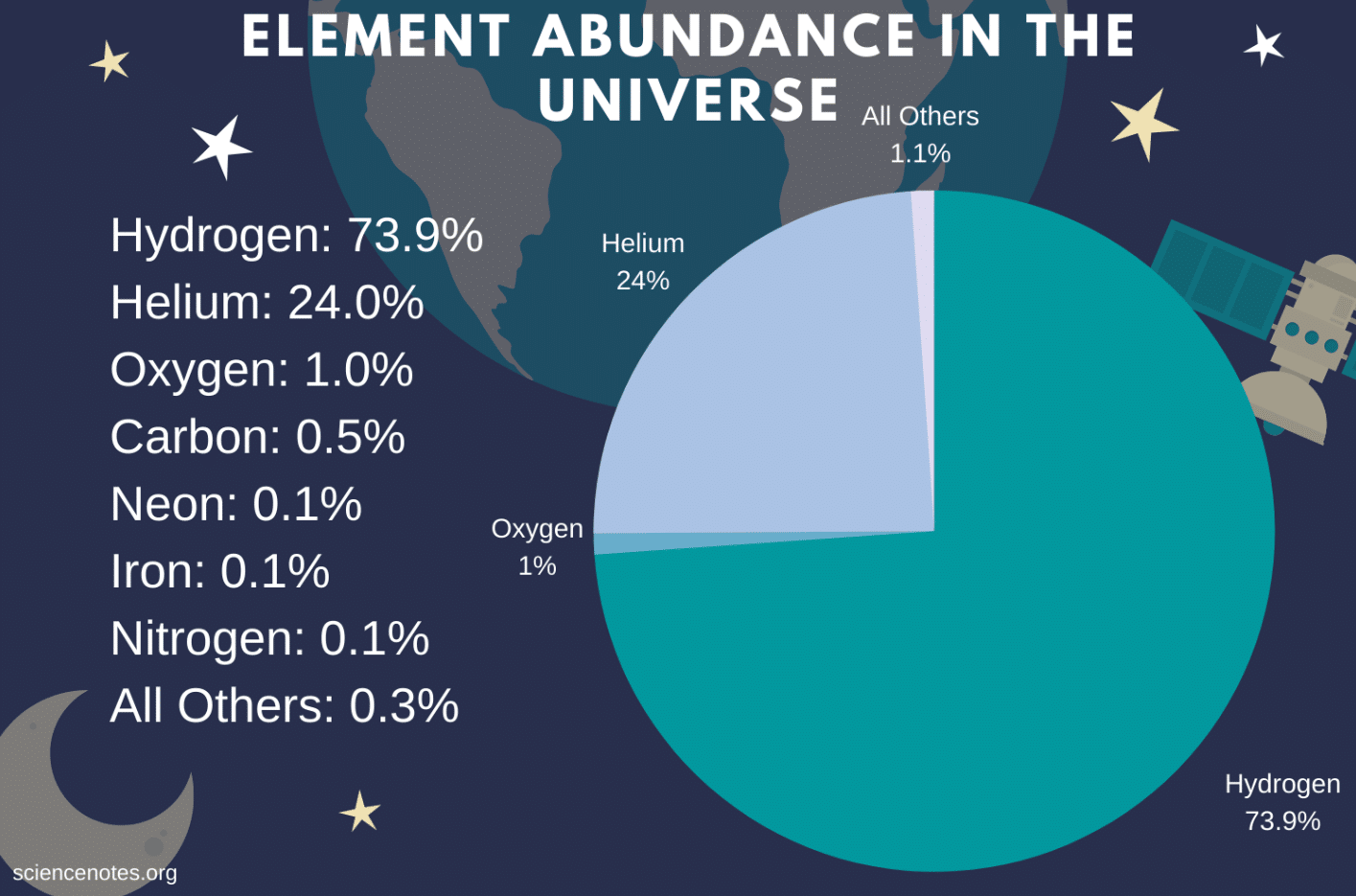 Hydrogen is colorless, odorless, non-toxic, and highly flammable.
Hydrogen is colorless, odorless, non-toxic, and highly flammable.
Most importantly, the earth is riddled with hydrogen.
It can be found in a wide range of compounds – from oxygen in water (H2O) to hydrocarbons like petroleum and natural gas.
Best of all, hydrogen is considered an ‘energy carrier’ rather than an energy source itself because it needs to be produced from other substances.
But once it’s produced and used as a fuel, it does not produce harmful greenhouse gas emissions, such as carbon dioxide (CO2), or other harmful pollutants like methane or sulfur dioxide.
- The only byproduct that enters the atmosphere during hydrogen combustion is water vapor, making it a clean alternative to fossil fuels.
Hydrogen also has a high energy content per unit of mass, which makes it an attractive option for energy storage and transportation.
It can store more energy in a smaller volume compared to conventional batteries, making it suitable for applications where space and weight are critical factors.
This is what makes Hydrogen ideal as a source of energy.
It can be used in various applications – such as powering fuel cell vehicles and combustion engines.
- In fuel cells, hydrogen reacts with oxygen to produce electricity – making it a clean power source for transportation, industrial capacity, and providing electricity in homes.
So while hydrogen itself is a great source of energy, producing it comes with a catch…
Not All Hydrogen Is Created Equally: The “Good Kind” Vs. The “Bad Kind”
Even though hydrogen is a special and abundant element, it doesn’t exist by itself in nature.
As mentioned above, it has to be produced by separating it from other things it’s found in – like water, plants, and fossil fuels.
There are different ways to produce hydrogen, and some are cleaner than others.
- “Green” hydrogen is the cleanest. It’s made by splitting water into hydrogen and oxygen using renewable energy like solar and wind. No harmful CO2 is released into the ai
- “Blue” hydrogen is made from natural gas or fossil fuels, but the CO2 it produces is captured and stored, so it doesn’t harm the environment as much.
- “Grey” hydrogen is the least clean. It’s made using natural gas or methane, and the CO2 is released into the atmosphere, which is not good for our planet.
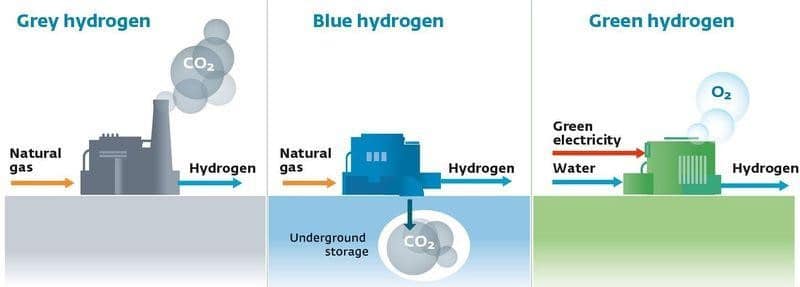
Right now, most of the hydrogen we produce is “grey” (roughly 95%), and it creates a lot of harmful emissions that flow into the atmosphere and accelerating climate change.
That’s why “green” hydrogen production and infrastructure is ramping up as a zero-emissions alternative.
Put simply, green hydrogen is produced cleanly through a process known as electrolysis.
Here’s how it works:
- During the electrolysis process, electricity from renewable sources – like solar or wind turbines – is used to split water (H2O) into its constituent elements, hydrogen (H2) and oxygen (O2). This happens when an electric current is passed through the water, causing the hydrogen atoms to separate from the oxygen atoms.
- The separated hydrogen gas is collected and stored for later use.
- The oxygen that is produced during electrolysis is also collected, but it can be released into the atmosphere without causing any environmental harm since it’s just pure oxygen.
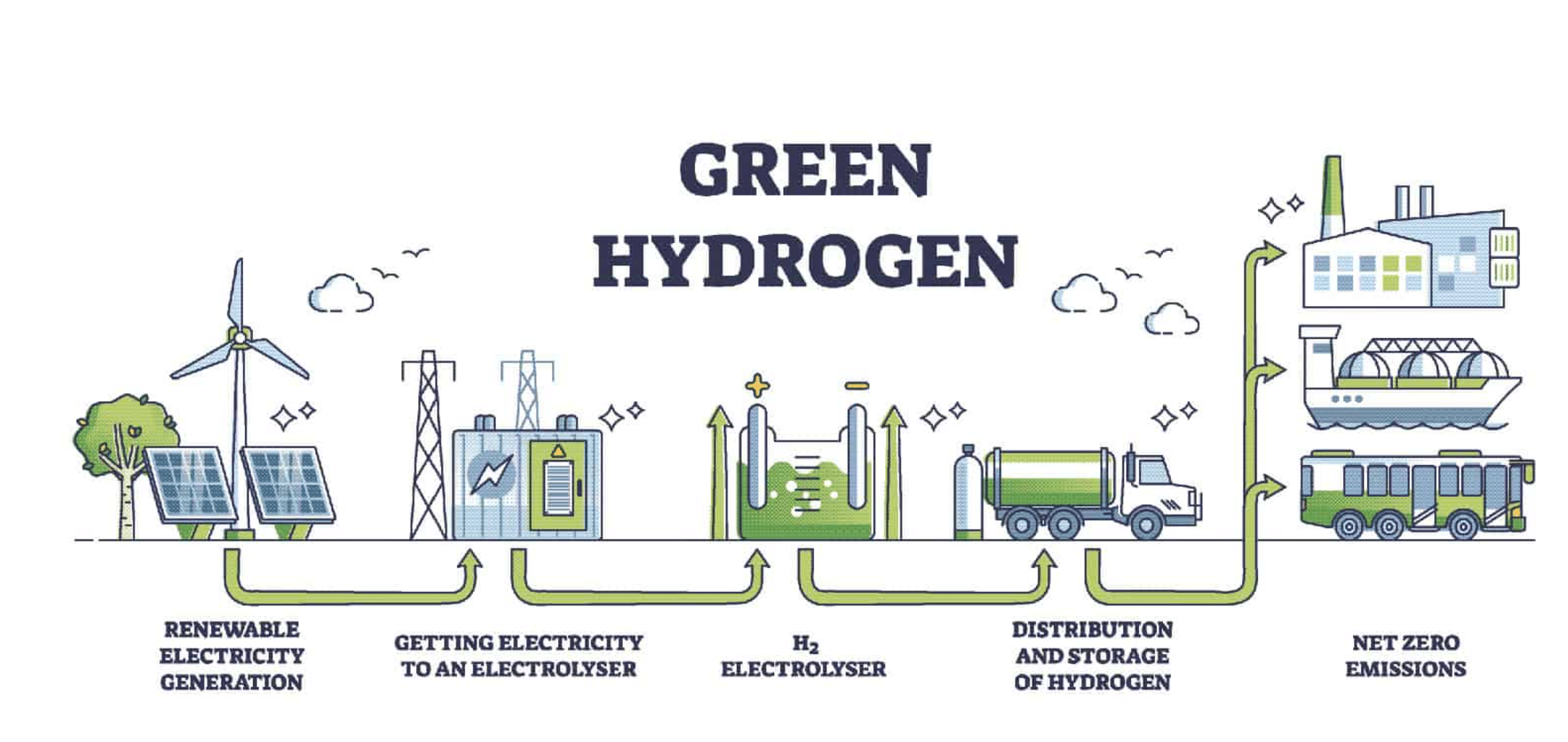
Green Hydrogen: Energizing The Race Towards Net-Zero
Governments around the world have pushed for a ‘net-zero’ environment by 2050 – meaning the balance between the amount of greenhouse gas (GHG) that’s produced and the amount that’s removed from the atmosphere.
And because of this zero-emission and powerful renewable energy source that green hydrogen offers, governments and corporations around the world have realized they cannot hit their climate change goals without it. And these goals are ambitious.
- According to the United Nations, more than 70 countries, including the biggest polluters – China, the U.S., and the EU – have set a net-zero target, covering about 76% of global emissions.
- More than 3,000 businesses and financial institutions are working with the Science-Based Targets Initiative to reduce their emissions in line with climate science.
- And more than 1000 cities, over 1000 educational institutions, and over 400 financial institutions have joined the “Race to Zero”, pledging to take rigorous actions to halve global emissions by 2030.
Because of this, governments have aggressively pushed incentives and subsidies to push green hydrogen infrastructure and production.
The Green Hydrogen Market Is Still In The Early Stage – But Growing Quickly
It’s clear that the current path is to move from grey hydrogen green hydrogen.
Major countries around the world have set up green hydrogen policies to make sure it grows fast enough to help achieve the net-zero goals.
For example, over the last couple of years we’ve seen the:
- USA: Inflation Reduction Act
- EU: Green Deal
- UK Hydrogen Strategy
- Canada’s National Hydrogen Strategy
- Japan’s METI: Committed to H2 within transportation, industry, and power production.
- India’s National Hydrogen Mission
And on the back of all these subsidies, the global green hydrogen market is poised to grow at a compounded annual growth rate of 54.98% between 2023 to 2032 – from $4.02 billion in 2022 to over $331.98 billion by 2032.
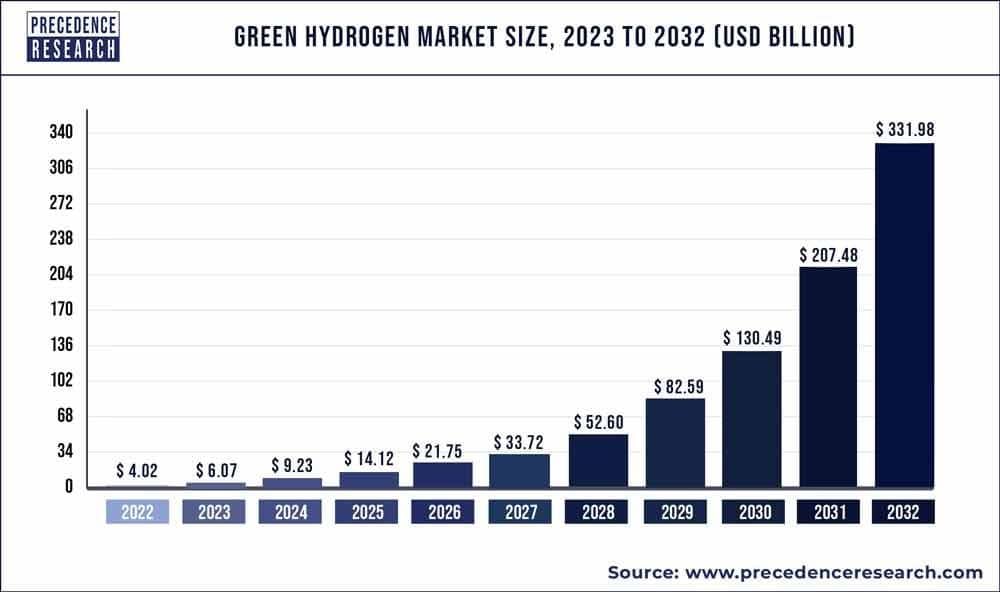
But all this growth requires much more green hydrogen infrastructure and investment.
Producing it is one thing, using it is another.
The entire hydrogen supply chain requires trillions in capital to scale it appropriately – from transportation and refueling stations to distribution and storage.
In fact, Goldman Sachs believes the world must invest over $5 trillion in green hydrogen supply-chains to reach net-zero targets to supply the huge demand for hydrogen (which is expected to rise 9x by 2050).
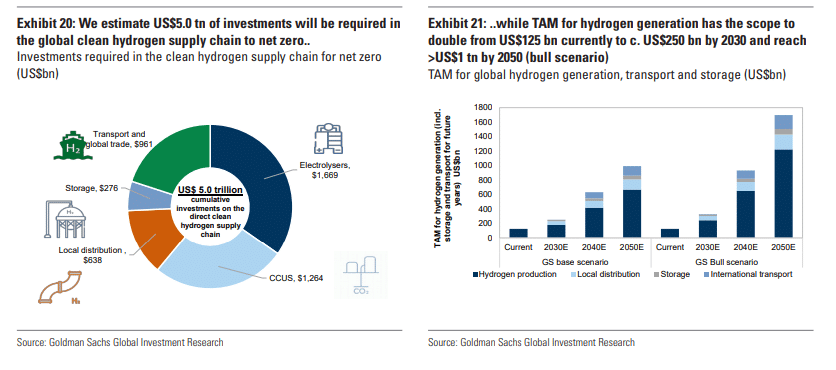
Goldman Sachs also noted that green hydrogen is the “next frontier of clean technology.”
This is an incredible amount of investment flowing into the rapidly growing sector.
And it’s only the beginning as macro-and-micro fundamentals switch gears towards hydrogen as a clean energy source.
Disclosure: Owners, members, directors, and employees of carboncredits.com have/may have stock or option positions in any of the companies mentioned: FHYD.
Carboncredits.com receives compensation for this publication and has a business relationship with any company whose stock(s) is/are mentioned in this article.
Additional disclosure: This communication serves the sole purpose of adding value to the research process and is for information only. Please do your own due diligence. Every investment in securities mentioned in publications of carboncredits.com involves risks that could lead to a total loss of the invested capital.


